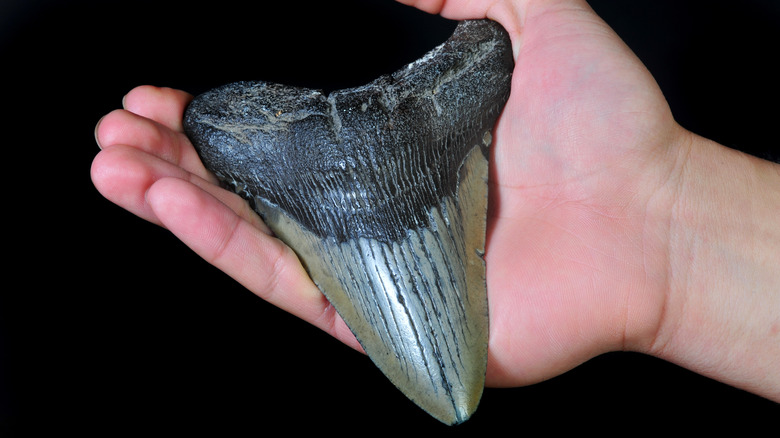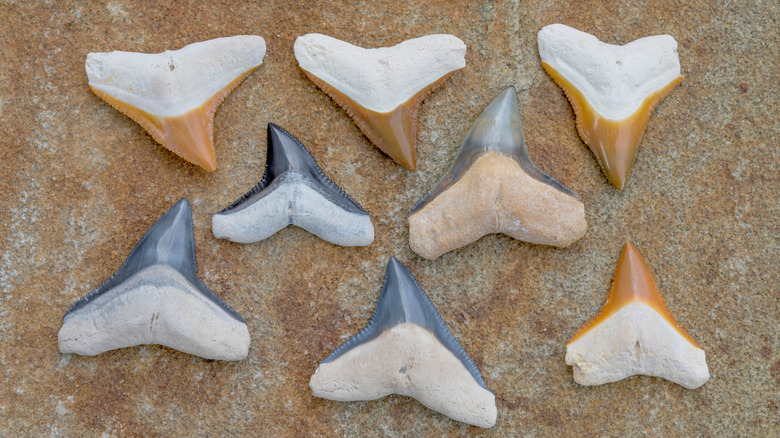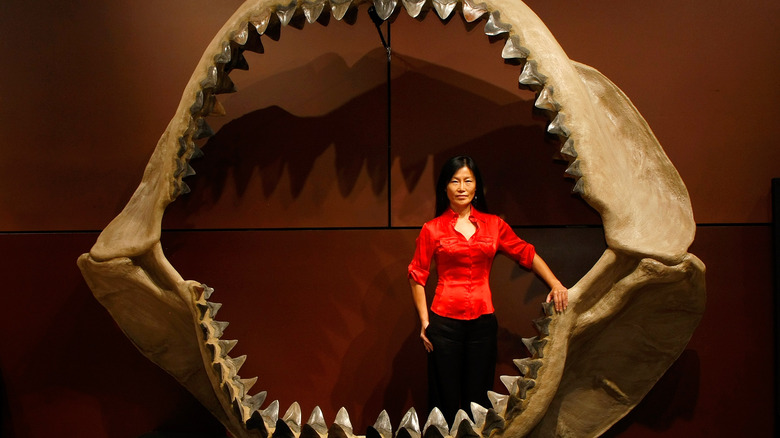The Rare, Prehistoric Find Made By A 9-Year-Old From Maryland
It's not common for people to discover objects from prehistoric times, but it's not impossible. Take for instance the discovery of some 30,000 clay tablets from the "library" of Ashurbanipal in Nineveh that date to sometime around 700 B.C., per Ancient Origins. Or the discovery of King Tutankhamun's tomb in 1922, which is considered to be one of the most important discoveries in modern times (via NPR).
While it might seem like finding ancient artifacts is limited to archeologists excavating specific sites, that's not always the case. In 2019, a group of modern-day treasure hunters in Buckinghamshire, United Kingdom, got their hands on hundreds of gold and silver coins dating back to the 12th century — a find worth more than $180,000, per Metro. And then we have the more recent prehistoric find made by 9-year-old Molly Sampson who was beach combing with her sister off the shores of Calvert Cliffs in Maryland.
Molly Sampson collects shark teeth
Sampson might be on the young side, but she shares an interesting hobby with her sister, and that happens to be collecting shark teeth. She has amassed quite a collection of some 400 teeth, and on December 25, 2022, she hit the jackpot when she dug up a tooth belonging to a megalodon — perhaps the largest of all sharks known to exist, according to Live Science.
The tooth is about five inches long, and practically covers Sampson's hand. While it's difficult to imagine the size of the mouth from which such a tooth came, the Natural History Museum explains that megalodons were about 50 feet long. To put that into perspective, they would be about three times larger than the great white sharks that currently live in our oceans. CBS News reports that these super predators swam in the Earth's oceans anywhere from 23 million to 3.6 million years ago.
The tooth is a once-in-a-lifetime discovery
The Sampsons took the tooth to Calvert Marine Museum in Solomons, Maryland, where curator of paleontology Stephen Godfrey told them it was a "once-in-a-lifetime" find, per Live Science. He also explains that part of the reason that Sampson was able to find a tooth from an animal that lived so long ago is because megalodon skeletons do not fossilize well. Not only that, but the tooth that Sampson found had been well preserved in the ocean's sediment along the cliffs where she discovered it (via Live Science). Plus, the tide was low that day, making conditions perfect for finding a rare, prehistoric shark tooth.
Godfrey tells CBS News that the tooth came from the left side of the shark's mouth. He also explains that megalodons frequently ate whales and dolphins because discoveries of whale and dolphin bones reveal cuts made from massive megalodon teeth.


